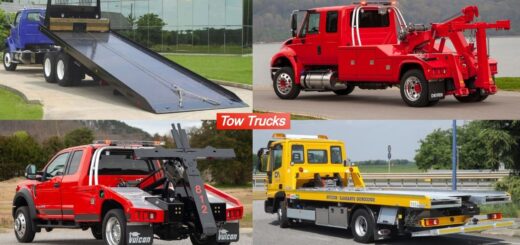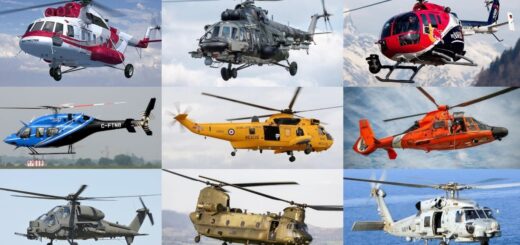8 Parts of Airplane and Their Functions [With Pictures & Names]
![8 Parts of Airplane and Their Functions [With Pictures & Names]](https://engineeringlearn.com/wp-content/uploads/2023/06/Parts-of-Airplane-1024x539.jpg)
Introduction
8 Parts of Airplane and Their Functions [With Pictures & Names]: – Air travel has turned into a part of day-to-day existence. Airplane travel is an increasingly simple and affordable mode of transportation. Have you at any point considered what number of airplane parts comprises that Airbus you’re boarding? As a matter of fact, the present commercial airliners are made of in a real sense a large number of parts. (Types of Airplanes)
What is Airplane Parts?
Airplane is a word severely held for fixed-wing airplanes. This sort of airplane pushes forward in the air considering the push produced with the help of a fly motor and in specific occurrences a propeller. As such, fixed-wing airplanes that are fueled orchestrate to be called planes. It’s most common when you make a trip for long distances to take an airplane. By far most of the commercial planes were essentially made of aluminum, and newer ones are made of composite materials.
Military airplanes might utilize a light alloy, like titanium. Airplanes come in various sizes yet the majority of them have similar parts, these parts are kept intact by the fuselage which is the body of the plane.
Parts of Airplane / Parts of Aircraft
Below we should take a look at the principal parts of an airplane and get a better understanding of their functional capability:-
1. Power Plant: ( Parts of Airplane )
The power plant, maybe the most significant of parts, is a combination of both the engine as well as the propeller. The essential function of an engine is to generate or produce the power important to run the propeller. In modern-day airplanes, the power plant is additionally used to generate electrical power vital for operating every one of the electrical parts for example flight instruments, and heat the cabin as the temperature goes down by almost -10 degrees/1000m elevation.
2. Engines: ( Parts of Airplane )
The engine (s), or power plant, of an airplane creates the thrust required for the plane to fly. By and large, there are two sorts of airplane engines, reciprocating and turbine. In the case of reciprocating engines, air flows into the engine, is compressed and blended in with fuel, and an electric spark to combust, with exhaust or fumes gases leaving the rear of the engine through the manifold. The engine spins the propeller which then, at that point, creates the thrust to push the airplane ahead.
On the other hand, with a turbine engine, the action of compressing air, blending in with fuel, ignition, and exhaust are the same however happens inline. For this circumstance, the power is generated by the air being consumed by the motor.
3. Wings: ( Parts of Airplane )
The wings of an airplane serve a similar purpose as the wings of a bird, as per their name. An Airplane is equipped for flight on the grounds that its wings provide lift. Lift is created by the shape of the wings and the plane’s speed as it pushes forward. Wings include ailerons and flaps.
The stalling speed of a wing is reduced by flaps at a given weight. The primary edge of the wings faces the front of the airplane. Similarly, the trailing edge of the wing can be characterized as the back edge that incorporates the aileron and trim tab. At the top of the fuselage of a plane, several wings are fixed high and which is known as a high-wing plane. Low-wing airplanes are planes on which the wings are installed lower than mostly up the fuselage.
Parts of the Wings
Below we discuss some parts of the wing to control this lift amount and direction:-
(a) Ailerons
Ailerons control the airplane’s movement on its longitudinal axis, causing it to roll left to right. The ailerons are located outwardly on trailing edge of the wing. At the point when a pilot turns left in the cockpit, the left aileron goes up, decreasing lift on that side, and the right aileron goes down, increasing lift causing that side ascent. This causes the plane to roll to one side and start a turn.
(b) Winglet
On an airliner, the tip of the wing is bent or bowed up. This is known as a winglet. Winglets were created to decrease induced drag.
(c) Flaps
Flaps, similar to ailerons, are located on the trailing edge of the wing. Not all like ailerons, the flaps move evenly on each side and create more lift and drag. Flaps are regularly utilized during departure and landing, when airplane speeds are lower, to create extra lift and reduce slow- down speeds.
(d) Slats
Slats or Supports are like folds, just located at the front of the wing, and further change a wing’s shape for a short time frame to increase lift.
(e) Spoilers
Spoilers are utilized to help the airplane descend and lessen the lift part of an airfoil. This permits the plane to descend and lose altitude without acquiring airspeed.
4. Fuselage: ( Parts of Airplane )
The fuselage is the fundamental section, or body, of the airplane. (That is on the grounds that it is gotten from the French word for “spindle-shaped” – fuselé.) This is where you’ll track down passengers, freight, and the flight crew. The fuselage is the foundation for the structural construction of the airplane. The tail number, which identifies and distinguishes each plane, is frequently located at the rear of the fuselage near the tail.
Types of Fuselages
(a) Truss
In the Truss fuselage structure, the load or heaps are not uniformly distributed or dispersed all through the body. Furthermore, this sort of structure offers minimum cabin space.
(b) The Monocoque & Semi-monocoque Design
The monocoque skin is utilized to provide support to loads. This structure can be of major areas of strength but can’t tolerate dents on the surface. For instance, you can apply considerable force to the ends of an aluminum can without causing any damage. However, on the off chance that you damage it through the sides, it will fall. As an outcome, the monocoque chassis can be utilized for smaller airplanes. Nonetheless, it isn’t appropriate for mammoth commercial airplanes as they are subjected to bending loads, demanding immensely high shell thickness.
5. Cockpit: ( Parts of Airplane )
The cockpit of an airplane is likewise called the flight deck. The cockpit of the airplane is where the plane is controlled. This part looks like an office for the pilot and co-pilot. All information is sent to the pilot and co-pilot with the help of panels inside this section to ensure that the airplane can fly steadily and consistently. This is in like manner an exceptional segment equipped with security systems, by which the airplane is controlled.
In this manner, the cockpit provides every information about the airplane and is specially designed to give the pilots an decent angle during flight. This is utilized to control heading, speed, altitude, altimeter, and so forth. The primary flight display (PFD) typically includes altitude indicator, airspeed, heading, and vertical airspeed. A navigation display (ND) provides information on the route, for example, waypoint, wind speed, and direction of speed.
A flight management system (FMS) includes insights regarding the flight plan. A transponder, which shows the location of the plane to the Aviation authority, is moreover located in the cockpit. Electronic flight instrument displays are one of the features of a glass cockpit. These are in most cases are large LCD screens as opposed to the traditional style of analog dials and gauges. Epic’s whole fleet contains glass cockpits, on the grounds that the airplanes expect pilots to be experienced and knowledgeable in glass cockpits.
The cockpit contains the following parts mentioned below: –
(a) Flight Controls
The flight controls of a plane permit or license the pilot to control a plane in the air and now and again on the ground. In practically all airplanes, the flight controls are movable aerodynamic surfaces attached or connected to a principal lifting body.
(b) Instrument Panel
This is like a car’s dashboard, which provides the pilot with information about the flight, the engine, and the circumstances of the airplane. Contingent upon the aviation electronics installed in an airplane this might be on an interactive screen or utilizing the typical ‘6 Pack’ for key snippets of information.
(c) Overhead Panel
The overhead panel contains airplane systems, for example, cooling, electrical, fuel, and hydrodynamics.
(d) Side Consoles
Side consoles (control center) are for communication instruments and documentation, contingent upon the airplane.
(e) Pilot Seats
There are two seats located in the cockpit in which one for the pilot and the other one is for the co-pilot.
(f) Rudder Pedals
Rudder pedals control yaw in flight and is utilized for steering or directing on the ground during a taxi.
6. Tail: ( Parts of Airplane )
The empennage, likewise called the tail or tail assembly, is located at the back of a plane. The tail provides stability during the flight. This is basically the same as how feathers on an arrow provide stability. On the off chance that “empennage” sounds French, this is on the grounds that it is, as a matter of fact. The term is derived from the French word empenner, which signifies “to feather an arrow” The tail assembly comprises the vertical stabilizer, rudder, elevator, horizontal stabilizer, and static wicks.
An airplane’s tail is chiefly utilized for stability and steadiness, as well as creating lift in the mix with the wings. It’s comprised of several parts.
(a) Vertical Stabilizer and Rudder
An vertical stabilizer is an essential or fundamental part of a plane that stabilizes as well as balances the plane on an upward axis. At the point when an airplane flies at high paces, it will in general tilt on one side. In addition, it assists keep the wings level during flight and gives the proper or legitimate orientation for landing. The rudder in an airplane is one of the primary parts of flight stability systems. They are mounted upward on an airplane’s tail segment, the rudder assists with keeping the plane straight. The rudder assists the pilot with turning the airplane by creating a lifting force in a specific direction. This help forestalls the side-to-side movement of the airplane’s nose.
(b) Horizontal Stabilizer and Elevator
A horizontal stabilizer is a fixed-wing attached or joined to the fuselage of an airplane. The horizontal stabilizer is typically used to provide stability during flight by controlling the up and down movement of the airplane. A horizontal stabilizer might be placed at either the front or the rear of an airplane fuselage. An elevator is a somewhat small movable segment of the stabilizer that can be utilized to control the pitching motion of the airplane during flight.
7. Propeller: ( Parts of Airplane )
A propeller is an aerodynamic gadget that converts or changes over rotational energy into force. This force propels the airplane forward. This creates a thrust that is perpendicular or opposite to its plane of rotation or pivot. Propellers have at least two blades. Propeller blades are spaced equally around the hub. They are accessible in either fixed-pitch or variable-pitch configurations.
8. Landing Gear: ( Parts of Airplane )
The landing gear is the core or center support of the plane when it is parked, its moving, taking off as well as landing. The Landing gear is the undercarriage or underside of an airplane. Landing gear is found or located under the belly of the plane which further comprises a wheel to soften the impact or contact with the ground and might be retractable into the fuselage. The essential and fundamental functional capability of the landing gear is to absorb the force of landing and, clearly, prevent the fuselage from hitting the ground. In spite of improvements in innovation and various backup systems, emergency incidents including the landing gear do happen.
Conclusion
Pilots and airplane mechanics really should get familiar with the parts and their functions. All parts of an airplane are essential and fundamental for conducting a safe flight. A colossal responsibility pilots take on is ensuring all airplane parts are in magnificent condition prior to leaving on their flight journey. All of these parts work together to make a plane fly and permit it to securely move individuals and cargo. There are such countless significant parts of an airplane that there is certainly not a solitary most important part! Each part of an airplane works like a team and makes the flying conceivable and safe for their travelers.
Image Source: – cnn













